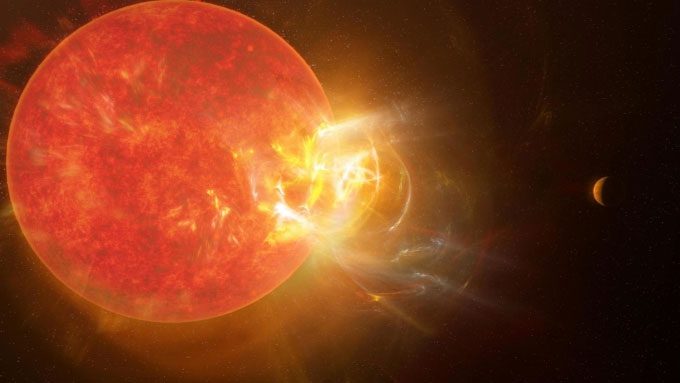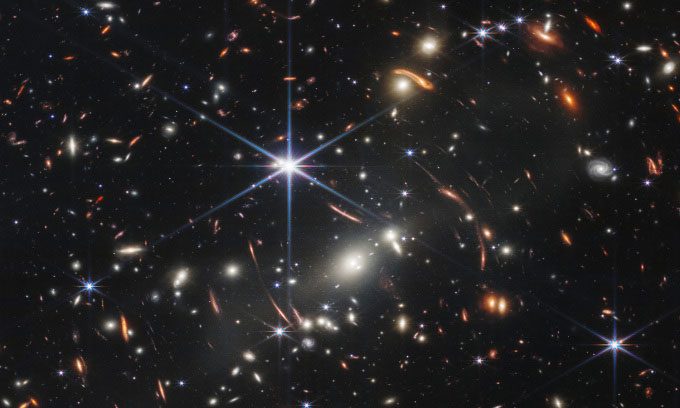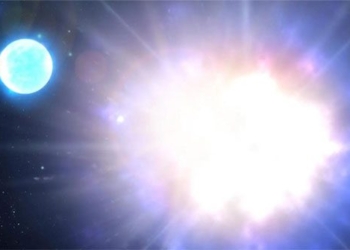To the naked eye, the night sky contains over 9,000 points of light, but this observable portion is just a small fraction of the universe.
The closest visible star system is Alpha Centauri, located approximately 4.25 light-years from Earth. The nearest star in this three-star system is Proxima Centauri; however, being a red dwarf, it is too dim to observe without a telescope.

Simulation of a flare erupting from the star Proxima Centauri. (Photo: NRAO/S. Dagnello)
The farthest star visible to the naked eye is V762 Cas, a variable star located 16,000 light-years away from Earth. Although it can be up to 100,000 times brighter than the Sun, its great distance makes it barely visible to the human night vision under ideal conditions.
All the stars visible to the naked eye have a mass significantly greater than that of the Sun. Stars that are equivalent to or smaller than the Sun do not emit enough light to overcome the light-years of distance between them and Earth, rendering them invisible.
While V762 Cas is the farthest star visible to the naked eye, it is not the farthest observable object without a telescope. This title belongs to the Andromeda Galaxy. Containing over one trillion stars, the galaxy appears to the human eye as a large, blurry patch the size of a fist. When observing Andromeda, one is receiving light that has been traveling for 2.5 million years.
Additionally, there are some flares and explosions that temporarily increase brightness to astonishing levels, making them visible for brief moments despite their extreme distances. For example, in 2008, the gamma-ray burst GRB 080319B was observable to the naked eye for about 30 seconds, even though it is over 7.5 billion light-years away. This means that when the light from the explosion started traveling, the Solar System had not even formed yet.

A distant galaxy region captured by the James Webb Space Telescope. (Photo: NASA/ESA/CSA/STScI).
Telescope technology allows us to observe fainter objects because they collect more light and can magnify images of more distant objects. However, even with the most advanced ground and space telescopes conducting extensive surveys, scientists have mapped less than 3% of the stars in the Milky Way and less than 1% of the galaxies in the observable universe.
To observe even more distant objects, experts take advantage of a unique natural phenomenon: When light from a distant star or galaxy passes through a massive cluster of celestial bodies, the cluster’s gravitational force can magnify the image, sometimes by over 10,000 times.
This phenomenon is known as gravitational lensing. Thanks to this, astronomers have been able to detect the most distant individual star ever recorded: Earendel. Earendel appeared only about 900 million years after the Big Bang, belonging to the first generation of stars in the universe. Although the light from Earendel took 12.9 billion years to reach Earth, this star is currently over 28 billion light-years away due to the universe’s accelerated expansion since the Big Bang.
Using gravitational lensing, astronomers have also employed the James Webb Space Telescope to accurately measure the distance to JADES-GS-z13-0, the most distant galaxy ever recorded. JADES-GS-z13-0 is currently over 33.6 billion light-years away from Earth and formed when the universe was only 400 million years old. Experts believe that humanity may still see even more distant cosmic objects in the future.





















































